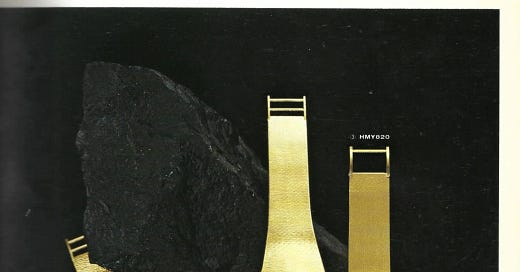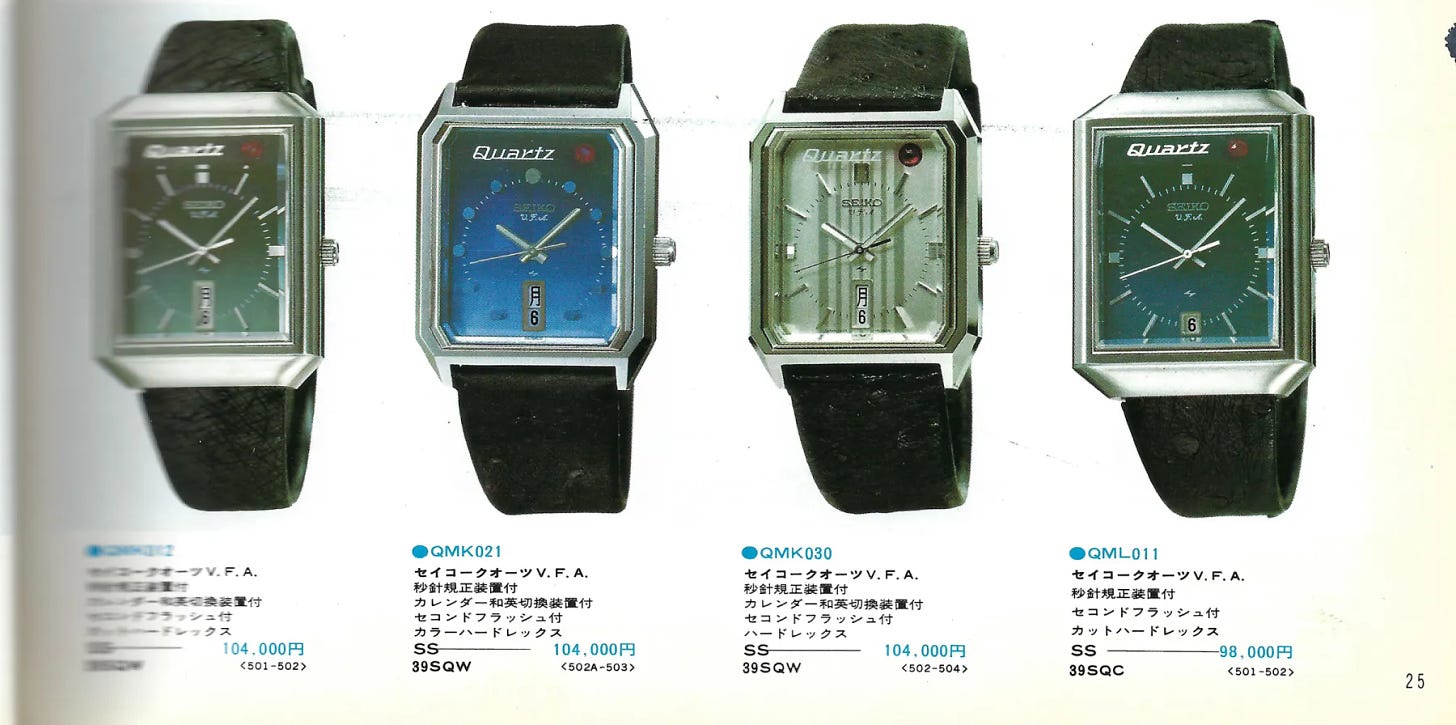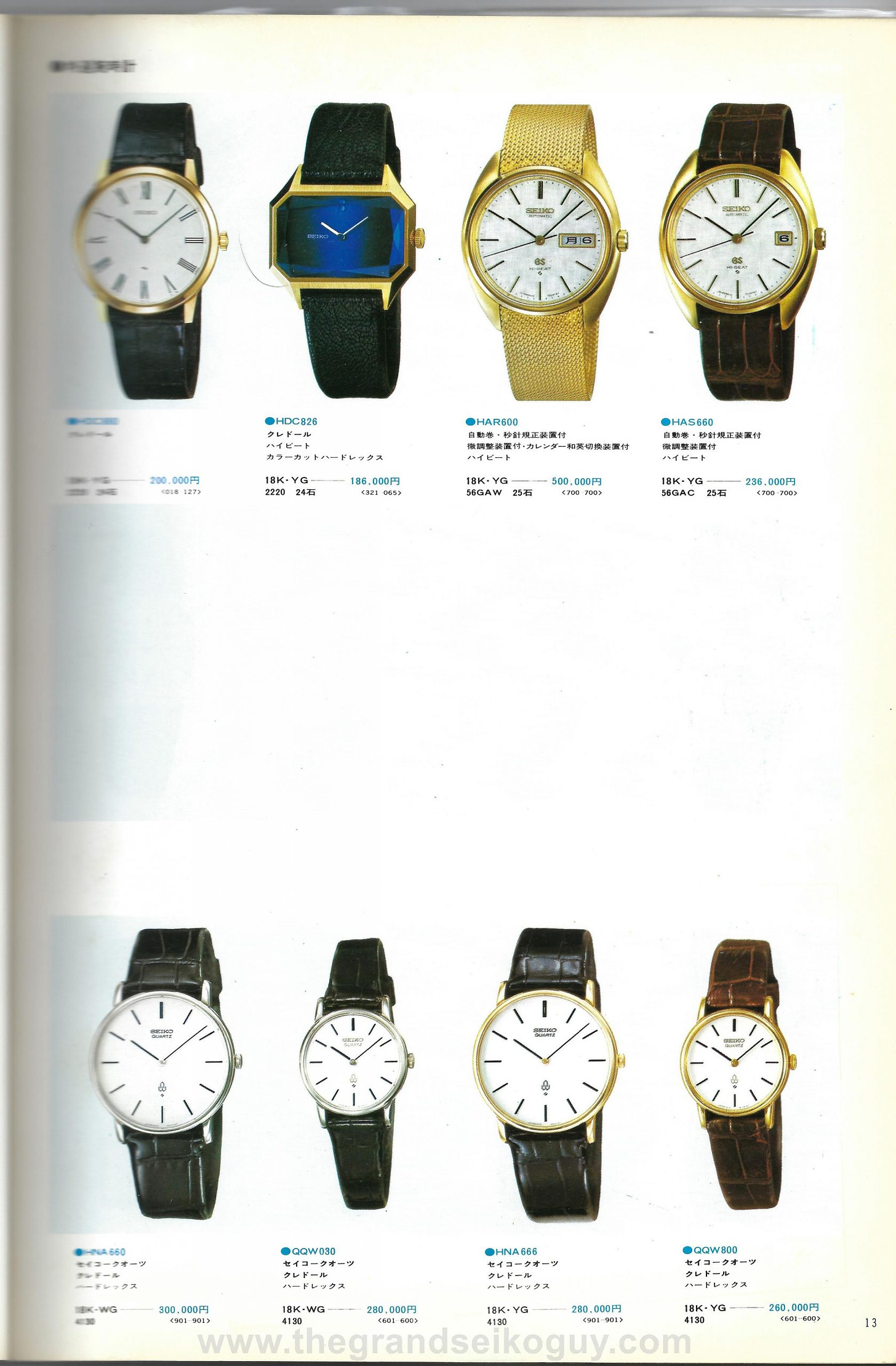Preamble
For the benefit of those subscribers who have signed up recently, each week I publish an article featuring scans of vintage Grand Seikos that appeared in the Seiko catalogues of the 1960’s and 1970’s.
Although based on the articles originally published on TGSG website, these articles will be updated where appropriate with additional knowledge gained in the three or so years since they were first made available.
Additionally, since I now have the complete set of the catalogues, I am able to publish these articles in the correct chronological order - something that wasn’t possible when posting to the main website since, when starting out documenting the catalogues, I hadn’t completed my collection of them.
You can view the previously published newsletters in this series here.
The Seiko 1975 Volume 2 Catalogue
After a run of 30 newsletters we reach the final catalogue from the 1960’s and 1970’s to feature vintage Grand Seiko references.
From the first catalogue dating from 1966 all the way through to the catalogues from 1971, you will find Grand Seiko references featuring at the front of the publications.
The 1966 catalogue featured just a pair of Grand Seiko references, and across the 1971 catalogues, no fewer than 43 examples were detailed, but then followed a fairly rapid shrinking of the range, leaving just nine references included in the 1975’s second volume that we will look at in this newsletter.
The reason for this rapid decline in the early 1970’s was of course the quartz revolution – initiated by Seiko themselves with the launch of the Astron on Christmas Day 1969. Whilst it’s true to say that quartz didn’t kill off mechanical Seikos completely (there are dozens of pages featuring mechanical watches in this publication), it seems that internally within Seiko a decision was made that there was simply no point trying to convince people of the merits of paying a premium for a highly precise mechanical watch, when a quartz movement could do a better job - often at a significantly lower price.
What is fascinating about this catalogue is that it features the two sections of the quartz range that in my view demonstrate clearly that whilst the specific “Grand Seiko” brand was retired in this year, the ethos behind Grand Seiko was already transitioning directly into the upper end of the quartz range.
With mechanical Grand Seikos having their last showing in this catalogue, it also includes for the first time examples from the newly created “Grand Quartz” range. Indeed, just as earlier catalogues would lead with Grand Seiko references, this one leads with two 18k gold cased Grand Quartz models that are priced at roughly two and a half times as much as the most expensive Grand Seiko of all time.
The other interesting thing to glean from this catalogue regarding the transitioning of mechanical Grand Seiko to quartz powered references is that the legendary “VFA” moniker features on an astonishing 21 quartz references. Given that in the entire mechanical Grand Seiko era there were only ever 11 VFA’s it really does go to show just how quickly the industry was changing in the early 1970’s.
Here’s a selection of the VFA quartz offer -
The quartz VFA’s utilised the 382x and 392x calibers – both accurate to +/- 5 seconds per month. That nine of the quartz VFA references featured in this catalogue had cases – and in some instances bracelets – made from precious metals goes to show just how much Seiko were promoting quartz as a luxury product.
Probably the most telling aspect of this catalogue that demonstrates just how much quartz was dominating things in 1975 is that – bar a cameo appearance of a couple of 18k gold cased references on page 13 – the Grand Seiko references weren’t featured until page 47, sharing that page with some King Seikos.
Grand Seiko 5646-7005 and 5645-7005
The two gold cased Grand Seiko references featured on page 13 of the catalogue are the 5646-7005 with its 18K bracelet, and the 5645-7005 on a leather strap.
The final steel offer
The non-precious metal cased offer is the same as that presented in the first catalogue of the year, save for the fact that the 6155-8000 has been dropped from the range.
Grand Seiko of course returned in 1988, and what happened in the interim is a story perhaps for another day, but we are not quite done yet with these newsletters, as one of the purposes of the series is to document every vintage Grand Seiko reference (and all variants of those references) that ever existed.
Next week’s newsletter will cover the Grand Seiko references that were designed for women.









